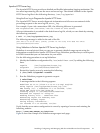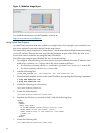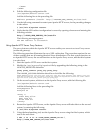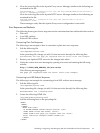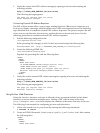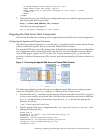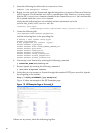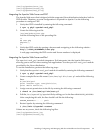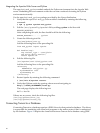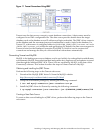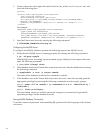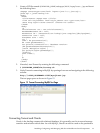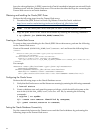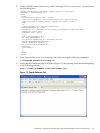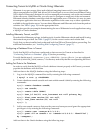/var/log/apache2/error_log
/var/log/apache2/access_log
/var/log/apache2/mod_jk.log
Integrating the Apache Web Server and PHP
The Apache Web server that is shipped with the supported Linux distribution includes a built-in
PHP module. Therefore, no extra configuration is required for Apache. Use the following
procedure to configure PHP:
1. Verify that PHP is installed by entering the following command:
# rpm -q php5 apache2-mod_php5
2. Create the following test file:
/srv/www/htdocs/test.php
Add the following lines to the preceding file:
<?
## test.php
phpinfo();
?>
3. Verify that PHP works by opening a browser and navigating to the following website :
http://<YOUR_HOSTNAME>/test.php
A web page containing the PHP version and license numbers is displayed.
Integrating the Apache Web Server and Perl
The apache2–mod_perl module integrates a Perl interpreter into the Apache Web server,
allowing you to use Perl when creating web applications. Use the apache2–mod_perl module
provided by the Linux distribution.
To test the installation, perform the following steps:
1. Verify that the apache2–mod_perl module is installed by entering the following command:
# rpm -q php5 apache2-mod_php5
2. Create a sample file test file named /srv/www/cgi-bin/test.pl and add the following
lines:
#!/usr/bin/perl
print "Content-type: text/plain\n\n";
print "Hello World!\n";
3. Assign execute permissions to the file by entering the following command:
# chmod +x /srv/www/cgi-bin/test.pl
4. Edit the /etc/sysconfig/apache2 file by adding perl to the line with APACHE_MODULES.
After completing this edit, the line should look like the following:
APACHE_MODULES=”... ... perl”
5. Restart Apache by entering the following command:
# /etc/init.d/apache2 restart
If there are any errors, check the following log files:
/var/log/apache2/error_log
/var/log/apache2/access_log
Installing, Configuring, and Managing Web Server Middleware Stack Components 29



